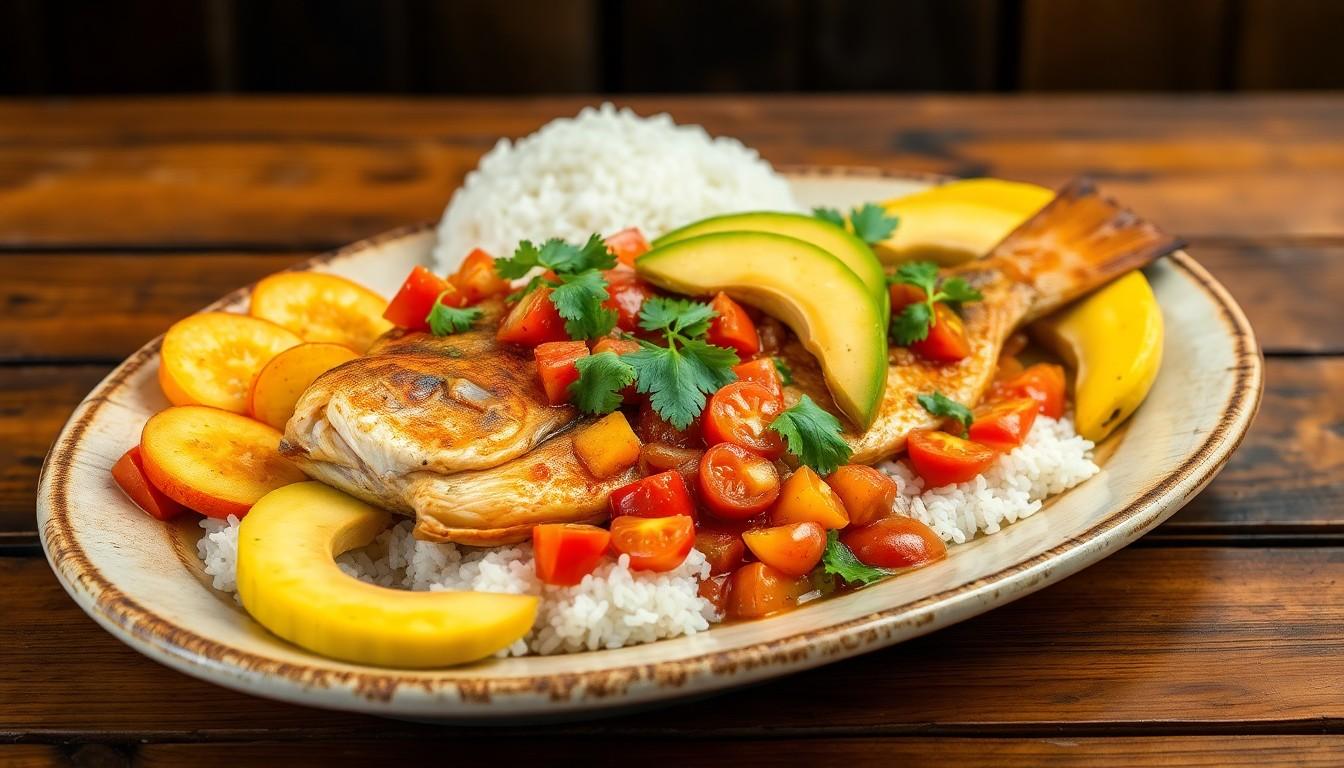The Best Fluffy Pancakes recipe you will fall in love with. Full of tips and tricks to help you make the best pancakes.

Pishcaguado: Discover the Flavorful Andean Dish You Need to Try Today
In the colorful tapestry of culinary delights, few dishes stand out like pishcaguado. This unique treat, often shrouded in mystery, has a way of making taste buds dance with joy. Imagine flavors swirling together in a delightful embrace, creating a dish that’s as fun to say as it is to eat.
What Is Pishcaguado?
Pishcaguado stands out as a unique culinary creation known for its remarkable taste and vibrant presentation. This dish originated in the Andean region, heavily influenced by local ingredients and traditional methods. Chefs prepare pishcaguado using a base of fish, often combining it with various spices that enhance its flavor profile.
Ingredients in pishcaguado typically include tomatoes, onions, and cilantro, all contributing to a fresh and zesty profile. The dish may incorporate other elements like potatoes or corn, popular staples in the region. Preparation techniques vary, but most chefs grasp the importance of slow-cooking to meld flavors.
Flavor connections often draw diners in. The interplay of spices creates a tantalizing experience, appealing to a wide range of palates. Traditionally served alongside rice or plantains, pishcaguado offers a satisfying and diverse meal option.
Cultural significance plays a role in pishcaguado’s popularity. Its presence at gatherings and celebrations highlights its importance in Andean heritage. Many appreciate the dish not just for its taste but also for the stories and traditions intertwined with each serving.
Pishcaguado exemplifies the rich culinary diversity found within Latin American cuisine. Each bite tells a story of tradition, flavor, and community. Enjoyable and fulfilling, it continues to captivate food enthusiasts who discover its delights.
The Origins of Pishcaguado

Pishcaguado originates from the Andean region, showcasing a blend of local ingredients and traditional culinary practices. This dish captures the essence of regional flavors and cooking customs.
Cultural Significance
In Andean culture, pishcaguado holds a special place, often served during significant gatherings and celebrations. It symbolizes hospitality and community, reflecting the importance of shared meals. Families and friends come together to enjoy this vibrant dish, fostering bonds and preserving culinary traditions. Celebrations amplifying the presence of pishcaguado underscore its role in cultural identity and heritage within the region.
Historical Context
Historical records trace pishcaguado back to indigenous communities, where fishing and agriculture combined shaped its development. The use of local spices and ingredients links the dish deeply to the region’s agricultural practices. Colonial influences introduced new cooking techniques, further enriching pishcaguado’s flavors. Evidence suggests that the dish evolved over centuries, adapting to changes in resources and cultural exchanges. Today, pishcaguado reflects both historical depth and culinary evolution, encapsulating the journey of the Andean people’s gastronomic history.
Preparation and Ingredients
Pishcaguado’s preparation highlights fresh ingredients and traditional techniques. This dish’s vibrant flavor profile comes from its carefully selected components, each playing a crucial role in creating authenticity.
Key Ingredients
Fresh fish serves as the main ingredient. Common choices include tilapia, trout, or local varieties, which enhance the dish’s freshness. Spices like cumin, paprika, and pepper impart depth. Chopped onions, diced tomatoes, and cilantro contribute essential herbs that brighten the seafood. Potatoes and corn often accompany the dish, adding heartiness to each serving. These staples fully integrate into the dish, reflecting the Andean culinary landscape.
Traditional Cooking Methods
Slow cooking defines pishcaguado’s preparation. This method allows flavors to meld beautifully, resulting in a rich broth. Cooking in clay pots preserves the essence of traditional recipes, giving the dish an earthy taste. Steaming often serves as an alternative method, especially when paired with plantains or rice. These techniques elevate the dish, enhancing textures and flavors, which resonate with Andean culinary customs.
Taste Profile and Uses
Pishcaguado offers a delightful combination of flavors that truly excites the palate. Bold spices like cumin and paprika contribute warmth, while fresh ingredients such as tomatoes and cilantro provide brightness. The use of fresh fish lends a distinct richness, creating a satisfying taste experience. Each element harmonizes, achieving a balance that defines this Andean dish.
Flavor Characteristics
Flavor characteristics of pishcaguado include a zesty, fresh profile. The brightness from tomatoes complements the earthiness of potatoes. Cilantro and onions add aromatic depth, enhancing the overall taste. A balanced combination of spices creates layers of flavor that appeal to a wide range of tastes. This rich broth accentuates the natural sweetness of fish, making it a standout dish within Andean cuisine.
Common Dishes Featuring Pishcaguado
Common dishes featuring pishcaguado blend traditional ingredients seamlessly. Often served alongside rice, the dish completes a wholesome meal. Plantains frequently accompany pishcaguado, offering a contrast in texture and flavor. Each serving reflects Andean heritage, making it a popular choice at gatherings and celebrations. Variations might include sides like avocado salad or grilled corn, showcasing the dish’s versatility in Andean cooking.
Benefits of Pishcaguado
Pishcaguado offers a variety of benefits, ranging from its nutritional content to its culinary merits.
Nutritional Value
Pishcaguado features fresh fish, providing high-quality protein essential for muscle growth and repair. Rich in omega-3 fatty acids, this dish supports heart health and cognitive function. Nutrient-dense vegetables like tomatoes, onions, and cilantro enhance its vitamin content. Potatoes and corn contribute complex carbohydrates for sustained energy. Each serving delivers a balanced profile, combining proteins, healthy fats, and vitamins that play a vital role in maintaining overall health.
Culinary Advantages
Pishcaguado shines in culinary versatility. It serves as a centerpiece for various meals, easily pairing with rice or plantains to create a satisfying dish. The slow-cooking method brings out rich flavors, allowing spices to meld beautifully, enhancing each bite. Variations may include local ingredients, like avocado salad or grilled corn, appealing to diverse palates. This adaptability makes pishcaguado suitable for both everyday meals and festive gatherings. Its cultural significance elevates pishcaguado, making it a delightful experience for any occasion.
Conclusion
Pishcaguado embodies the rich culinary heritage of the Andean region. Its vibrant flavors and cultural significance make it a beloved dish among food enthusiasts. Each ingredient plays a vital role in creating a delightful balance of taste and nutrition.
The slow-cooking techniques used in its preparation not only enhance its flavors but also reflect the traditions passed down through generations. As pishcaguado continues to grace tables at gatherings and celebrations, it serves as a reminder of the connections forged through food and community.
This dish is more than just a meal; it’s a celebration of culture and identity that invites everyone to savor the essence of Andean cuisine.



